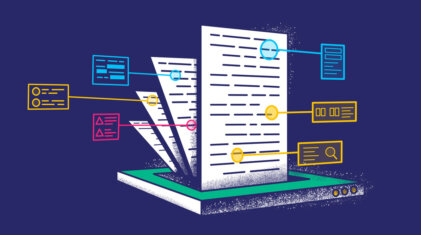Unlocking Hidden Business Observability with Holistic Data Collection
Why do organizations invest in data observability? Because it adds value. Sometimes we forget this when we’re building our observability solutions. We get so excited about…
Whether you are just starting your observability journey or already are an expert, our courses will help advance your knowledge and practical skills.
Expert insight, best practices and information on everything related to Observability issues, trends and solutions.
Explore our guides on a broad range of observability related topics.


The cost of logging is one of the big problems of a scaled software system. Logging solutions now need to support far more than they ever have. You need to make a real investment in a log monitoring software that can support these initiatives. However, the up-front costs of a custom-built logging solution are prohibitive for many organizations. No business wants its bottom line affected by logging costs. That’s where Coralogix comes in. Let’s look at the different IT cost optimizations associated with logging.
We are all familiar with the cost-saving opportunities around using cloud infrastructure. Logging solutions have greatly benefited from the advent of cloud computing, but with scale comes cost. As you process a greater volume of logs, your system will need to grow in sophistication. More servers, more storage, more network traffic. This amounts to an expensive cloud bill that quickly endangers your ROI.
If your company doesn’t build world-leading and competitive logging solutions, then training staff for such an endeavor is not cheap. Taking staff out of their day-to-day to learn and maintain the relevant skills will impact your company’s development process. Even more costly is finding an engineer who can do that and contribute to the other facets of your business. This is a dangerous gamble for a small or organization and a source of potential waste for a large company.
On top of the time spent hiring a skilled group of engineers, building your logging solution will take time. Even if you simplify your logging solution, you have serious engineering challenges to tackle. In order to build a truly future-proof solution, the requirements gathering and architecture before development even begins will create a huge resource drain.
For example, Elastic Stack has no off-the-shelf security functionality. Security is not something that can be sidestepped safely and will need time, investment, and testing. This time will cost you and every vulnerability is a potential delay on your ROI.
Downtime is one of the biggest frustrations with any service, and logging is no exception. This is particularly true if you are trying to build functions that use your logs as an input. Downtime in that scenario will have a knock-on effect on other business processes. You are likely to rely on your logging the most when there’s an issue elsewhere. If your logging solution isn’t fault-tolerant, then you are running a risk.
How can you use logs to assess what caused an outage, if you have an outage on your logging solution? The implications of this on your logging solution’s infrastructure is significant. Without logging expertise and IT cost optimization, you run the risk of frequent and protracted downtime.
A company’s logs represent a treasure trove of data that can feed into every aspect of your organization. Working out how to glean these nuggets from reams and reams of logs is a costly process. Leveraging machine learning is certainly one answer, but what if you don’t have in-house ML capabilities? The cost of hiring a data scientist is an expensive endeavor, and the time it takes to find the right person will further compound your missed opportunities. The time spent finding the right person could be far better spent growing your product, clients, or leads.
The core operational issue here is scale. The more logs you need to process, the more storage you need. You need larger servers to cope with demand. You need more sophisticated analytics to make sense of all of that data. The only easy way to stop this issue is to block certain logs, and allow them to disappear into the ether. The potential opportunity cost associated with this strategy is profound. What we need is more fine-grained control of how we process those logs.
Handling logs in different ways poses a complex engineering challenge. How do we decide whether logs go into cold storage, or into rapid access servers? Building this type of capability in house can be a complex and risky undertaking.
The TCO Optimizer helps you regain control of your logs, and provides savings of up to 2/3rds of your logging costs. Rather than process or block your logs, you’ll be able to tune the processing of each logging level. This can even be implemented retroactively. You can make a decision and change your mind a week later. Introducing new pipelines into your logging solution enables you to zoom in on the logs that really matter. No expensive upfront effort, or risky engineering projects. Just a simple, easy to use service that

Why do organizations invest in data observability? Because it adds value. Sometimes we forget this when we’re building our observability solutions. We get so excited about…

Cloud vendor lock-in. In cloud computing, software or computing infrastructure is commonly outsourced to cloud vendors. When the cost and effort of switching to a new…

Error logs are the first port of call for any outage. Great error logs provide context and cause to a mysterious, 3am outage. Engineers often treat…
